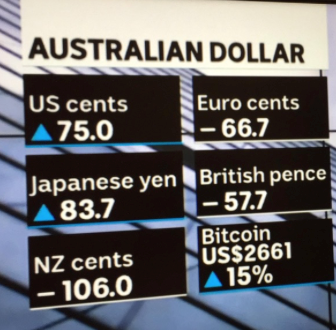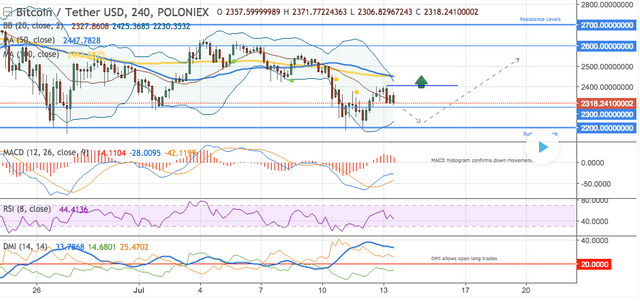Types of Cryptocurrencies Available
The world of cryptocurrency has always revolved around Bitcoin until recently, when virtual currencies has served a very important purpose in the investment realm and people start flocking to cryptocurrencies as compared to fiat currencies.
Believe it or not, aside from Bitcoin, there are over 800 cryptocurrencies! However, we'll just take a look at the current 5 most prominent currencies in the market. The 5 cryptocurrencies are:
- Bitcoin
- Ethereum
- Litecoin
- Monero
- Ripple
Firstly, is Bitcoin.
This is the first ever cryptocurrency invented and remains by far the most sought after cryptocurrency to date. Bitcoin is known as the digital gold standard in the cryptocurrency network. As explained in the previous module, Bitcoin is the pioneer of Blockchain Technology that made digital money possible.
It is the first ever decentralized peer-to-peer network powered by its users without any central authority or middleman which means, no unnecessary costs are included in the digital money transaction.
Over the years of Bitcoin’s existence, its value has fluctuated tremendously from zero to over $2000 per bitcoin to date. Its transaction volume has also reached 200,000 daily transactions.
One major advantage that it has over other crypotcurrencies is bitcoins are impossible to counterfeit or inflate. The reason being there are only 21 million bitcoins created for mining, no more no less. Therefore it is predicted by 2140, all bitcoins will already be mined.
Thanks to its blockchain technology, you have ultimate control over your money and transactions without having to go through a third party such as the bank or Paypal.
Bitcoin transactions are also impossible to be reversed. Therefore, you should only deal with trusted parties as Bitcoin is also used as a means for cyber-crime like dark net markets or ransomware.
Media companies and investment firms in South Korea, India, Australia and Japan have started discussing on how Bitcoin may surpass the value of certain fiat currencies in the future as an alternative monetary system.
ABC News, a national news service in Australia have also reported recently it is likely for Bitcoin to replace even the USD in the next 10 years if it sustains its current exponential growth.
The second most popular currency is Ethereum.
Created by Vitalik Buterin, it has scored itself the second spot in the hierarchy of cryptocurrencies. This digital currency launched in 2015 is predicted to surpass Bitcoin and may be the cryptocurrency of the future. Ethereum is currently worth $279 since its launch.
Is Ethereum similar to Bitcoin?
It is in a way, but not really. Like Bitcoin, Ethereum is a part of a blockchain network. The main difference between the two currencies is that Bitcoin blockchain focuses on tracking ownership of the digital currency while Ethereum blockchain focuses on running the programming code or network.
Instead of having to build an entirely original blockchain for each new application, Ethereum enables the development of thousands of different applications in a single platform. In the Ethereum blockchain, miners work to earn Ether. Ether is a crypto token that helps run the network.
Another use of the Ethereum blockchain is its ability to decentralize any services that are centralized. For instance, Ethereum is able to decentralize services like loans provided by banks, online transactions using Paypal as well as voting systems and much more.
Ethereum can also be used to build a Decentralized Autonomous Organization (DAO). A DAO is a fully autonomous organization without a leader. DAOs are run by programming codes on a collection of smart contracts written in the Ethereum blockchain. DAO is designed to replace the structure of a traditional organization and like Bitcoin, eliminating the need for people and a centralized control.
What are the most obvious benefits of Ethereum?
Firstly, a third party cannot make any changes to the data. The system is also tamper and corruption proof. This is because Ethereum is built based on a network formed around a consensus as a result, making censorship impossible.
Secondly, just like Bitcoin, Ethereum is backed up by secure cryptography. Therefore, the applications are well protected against any form of hacking.
The third cryptocurrency is Litecoin.
When the currency was first launched in 2011, it aspired to be the ‘silver’ to Bitcoin’s ‘gold’. Litecoin also recorded the highest market cap of any other mined cryptocurrency, after Bitcoin after its launch.
The main reason of Litecoin’s creation is to make up what Bitcoin lacked. The main difference between Litecoin and Bitcoin is the 2.5 minute time to generate a block for Litecoin, as opposed to Bitcoin’s 10 minutes.
For miners and technical experts, the Litecoin possesses a very important difference to Bitcoin, and that is a more improved work algorithm which speeds up the hashing power and system altogether.
One of the biggest advantages that Litecoin possesses is it can handle a higher volume of transactions thanks to its algorithm. The faster block time also prevents double spending attacks.
While Litecoin failed to secure and maintain its second place after Bitcoin, it is still actively mined and traded and is bought by investors as a backup in case Bitcoin fails. The current value of Litecoin is $46.
The fourth currency is Monero.
This digital currency was launched in 2014 and it’s main goal was to create an algorithm to add the privacy features that is missing in Bitcoin. Monero invented a system known as the “ring signatures” to conceal the identity of its senders and recipients.
Ring signatures combine a user’s private account keys with public keys obtained from Monero’s blockchain to create a ring of possible signers that would not allow outsiders to link a signature to a specific user.
While Monero users have the ability to keep their transactions private, they are also able to share their information selectively.
Every Monero account has a “view key”, which allows anyone holding it to view the account’s transactions.
Initially, the ring signature system concealed the senders and recipients involved in the Monero transactions without hiding the amount being transferred. However, an updated and improved version of the ring signature system known as “Ring CT” enabled the value of individual transactions as well as its recipients to be hidden.
Apart from ring signatures, Monero also improved its privacy settings by using “Stealth Addresses”, which are randomly generated, one time addresses. These addresses are created for each transaction on behalf of the recipients.
With this feature, the recipients use a single address and transactions they receive go to separate, unique addresses. This way, Monero transactions cannot be linked to the published address of the recipients.
By providing a high level of privacy, Monero allows each unit of its individual currency to be exchanged between one another. Meaning, each of its coin has the same value.
Like the other cryptocurrencies, Monero offers interested parties to mine blocks. Individuals may choose to join a mining pool, or they may mine Monero by themselves.
Anyone with a computer can mine Monero, as they do not require any specific hardware or specific integrated circuits like
Bitcoin. Instead, Monero utilizes a Proof-of-Work (PoW) Algorithm that is designed to accept a wide range of processors, a feature which was included to ensure that mining was open to all parties.
The price of Monero has fluctuated quite frequently from its launch until May 2017, where the current value of the currency is now $43.80.
Monero has received the acceptance of multiple dark web marketplaces and has generated its own fan base due to its privacy settings. Therefore, it is less speculative as compared to other digital currencies and traders purchase Monero as a hedge for other cryptocurrencies.
Last but not least is Ripple.
Ripple is actually a technology that has a dual function; as a digital currency as well as a digital payment network for financial transactions. It was launched in 2012 and co-founded by Chris Larsen and Jed McCaleb. The cryptocurrency coin under Ripple is labeled as XRP.
Unlike the other cryptocurrencies, Ripple operates on an open-source and a peer-to-peer decentralized platform which allows a transfer of money in any form, both fiat and cryptocurrency
Ripple uses a middleman in the currency transactions. The medium (the middleman) known as “Getaway” acts as a link in the network between two parties wanting to make a transaction.
The way it works is that the Gateway functions as a credit intermediary that receives and sends currencies to public addresses over the Ripple network. This is why Ripple is less popular when compared to the other digital currencies, with only a $0.26 value to date.
Ripple’s digital coin, XRP acts as a bridge for other currencies which includes both fiat and cryptocurrencies. In Ripple’s network, any currency can be exchanged between one another.
If user X wants Bitcoins as the form of payment for his services from Y, then Y does not necessarily have to possess Bitcoins. Y can pay X to X’s Gateway using US Dollars or any other currencies. X will then receive Bitcoins converted from the US Dollars from his Gateway.
The nature of Ripple’s network and its systems exposes its users to certain risks. Even though you are able to exchange any currencies, the Ripple network does not run with a proof-of-work system like Bitcoin. Instead, transactions are heavily reliant on a consensus protocol in order to validate account balances and transactions on the system.
But Ripple does improve some features of traditional banks. Namely, transactions are completed within seconds on a Ripple network even though the system handles millions of transactions frequently.
Unlike traditional banks, even a wire transfer may take up days or weeks to complete. The fee to conduct transactions on Ripple is also very minimal, as opposed to large fees charged by banks to complete cross-border payments.


helpful info thanks
Very good explanation, amazing to see the current prices since you wrote this post